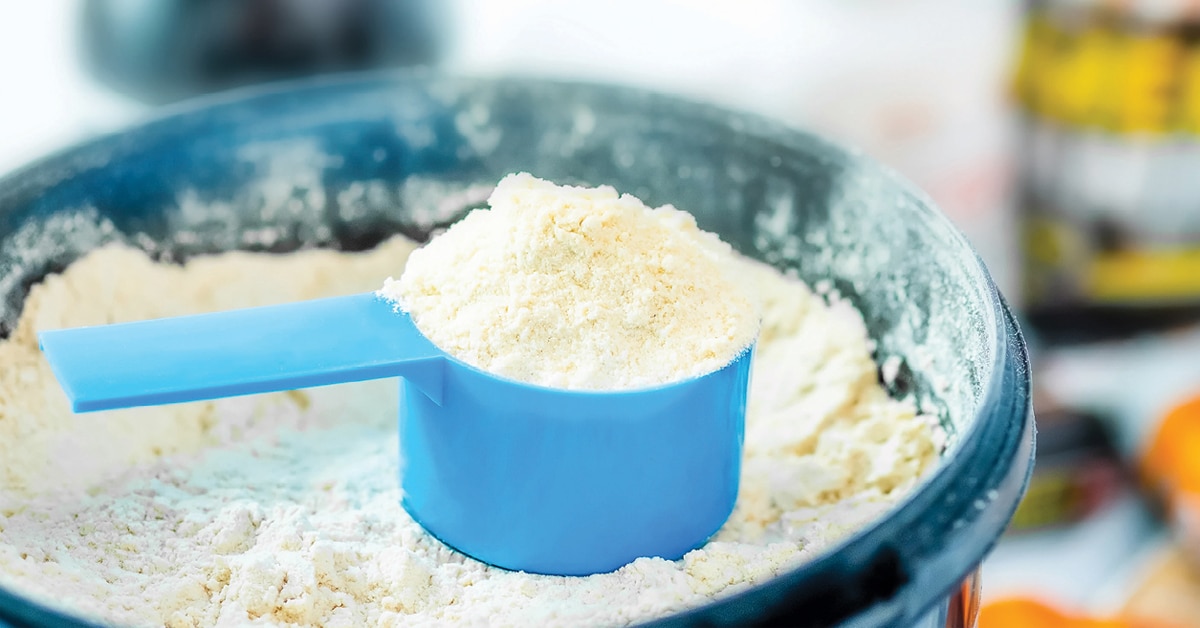We hear a lot about including prebiotics and probiotics in our diet to promote healthy digestion, whether by eating certain foods like yogurt or taking supplements. Similarly, there are hundreds of prebiotic and probiotic products on feed-store shelves we can give to our horses for their own gut health. Here’s a little more about just what they are, what they do and how to decide whether your horse even needs them.
Prebiotics are non-digestible food ingredients that stimulate growth and/or activity of bacterial components of the intestinal microflora (beneficial microbes inside the horse’s gut). Prebiotics are neither absorbed nor hydrolyzed (broken down) in the small intestine and, once they pass through unchanged, they can act as a nutritional substrate (surface on which to grow and obtain nourishment) for certain types of bacteria within the colon and cecum – the hindgut.
Probiotics are living microorganisms that can provide a beneficial effect beyond their nutritional value when they are ingested in certain amounts. Probiotics work to help prevent colonization of the gastrointestinal (GI) tract by pathogenic strains or prevent disease through four main mechanisms of action:
• regulation of the innate and acquired immune system;
• antimicrobial production;
• competition exclusion (the concept that two species cannot have similar niches in a habitat, coexist and both survive);
• inhibition or inactivation of bacterial toxins.
A horse may need prebiotics and/or probiotics for a variety of reasons, such as abrupt diet changes and stressful events (i.e. transportation, antibiotic administration, prevention or recovery from serious illnesses and procedures like surgery). However, it is ultimately up to the horse owner and whether they see a benefit when using these products.
How Prebiotics and Probiotics Work
Prebiotics work by being “fed” to “good” microbes – yeast, bacteria, protozoa and others within the horse’s GI tract. Because they are being fed to the good microbes, horses do not necessarily digest these ingredients. Prebiotics are most commonly carbohydrates. Examples used in equine feeds and supplements include:
• mannan-oligosaccharides (MOS);
• fructo-oligosaccharides (FOS);
• soybean oligosaccharides;
• polydextrose;
• psyllium.
Unlike prebiotics, probiotics are living microorganisms, such as bacteria. They ultimately work by preventing “bad” bacteria from colonizing the GI tract through the four mechanisms of action described earlier. Common probiotics used in equine feed and supplements include:
• Lactobacillus;
• Bifidobacteria;
• Enterococcus;
• yeast/Saccharomyces.
To be considered a probiotic, the bacteria within the supplement must be alive when administered, contain a taxonomically defined microbe(s) including genus, species and strain, and be safe for its intended use.
Despite the increasing popularity of owners using prebiotic and probiotic supplements, little research has been done on the safety and/or efficacy in horses. The safety of prebiotics has not been formally evaluated; however, they are assumed to be safe to use at this point and adverse effects of probiotics have been rarely reported.
A horse may need prebiotics and/or probiotics for abrupt diet changes and stressful events, such as transportation, antiobiotic administration and illness.
What’s Going on in the Equine Microbiome
The horse’s colon and cecum – the hindgut – are large fermentation chambers consisting of a diverse community of microbiota, including bacteria, fungi, protozoa and others. The entirety of different microorganisms within the equine hindgut is referred to as the microbiota, while the corresponding entity of genetic material is the microbiome. The microbiome composition is unique within each individual horse, but common phyla found in equines include Firmicutes, Bacteroidetes and Proteobacteria.
The microbes within the hindgut are essential to maintaining the overall health of the horse. These organisms provide a good proportion of the horse’s daily energy needs by fermenting plant materials into short-chain fatty acids, such as acetate, propionate and butyrate. The microbes also produce B vitamins and other essential nutrients.
Several factors can affect the horse’s microbiome composition including diet, exercise, obesity/ metabolic issues, medications, laminitis, acute colitis, stress, etc. Firmicutes, pictured here, are a phylum of bacteria commonly found in the microbiome composition of horses.
Why a Horse Might Need Either, or Both
There are several instances where it might be beneficial to add prebiotics and/or probiotics to a horse’s diet. They are often administered when there are GI-related concerns (i.e. diarrhea) to encourage growth of good microbes and to help minimize the invasion and proliferance of diseasecausing bacteria such as salmonella.

Owners might want to consider supplementing their horse’s diet with probiotics and/or prebiotics when their horse will be competing, due to increased energy demands and exposure to stress. (Rene Staempfli/Pixabay)
Other instances when they might prove helpful is during abrupt diet changes, antibiotic administration or prior to stressful events. They might also help increase feed digestibility in senior horses, while performance animals may benefit due to their increased energy demands and exposure to stress.
Whether a horse needs prebiotics, probiotics or both is ultimately an individual owner’s decision based on the horse’s workload, health and other factors. Many owners have seen positive changes within their horses when using one or both of these supplements, such as helping with diarrhea/ loose stools, ulcers, improving a senior horse’s digestion, prevention and recovery from surgery and certain ailments, and a host of other benefits.
Owners need to take the time to evaluate whether these supplements are necessary and if they see positive changes in their horse when using the products.
*****
Cassandra Gluck is a second-year master’s student at North Carolina State University in the animal science department where her research focus is on equine nutrition.

